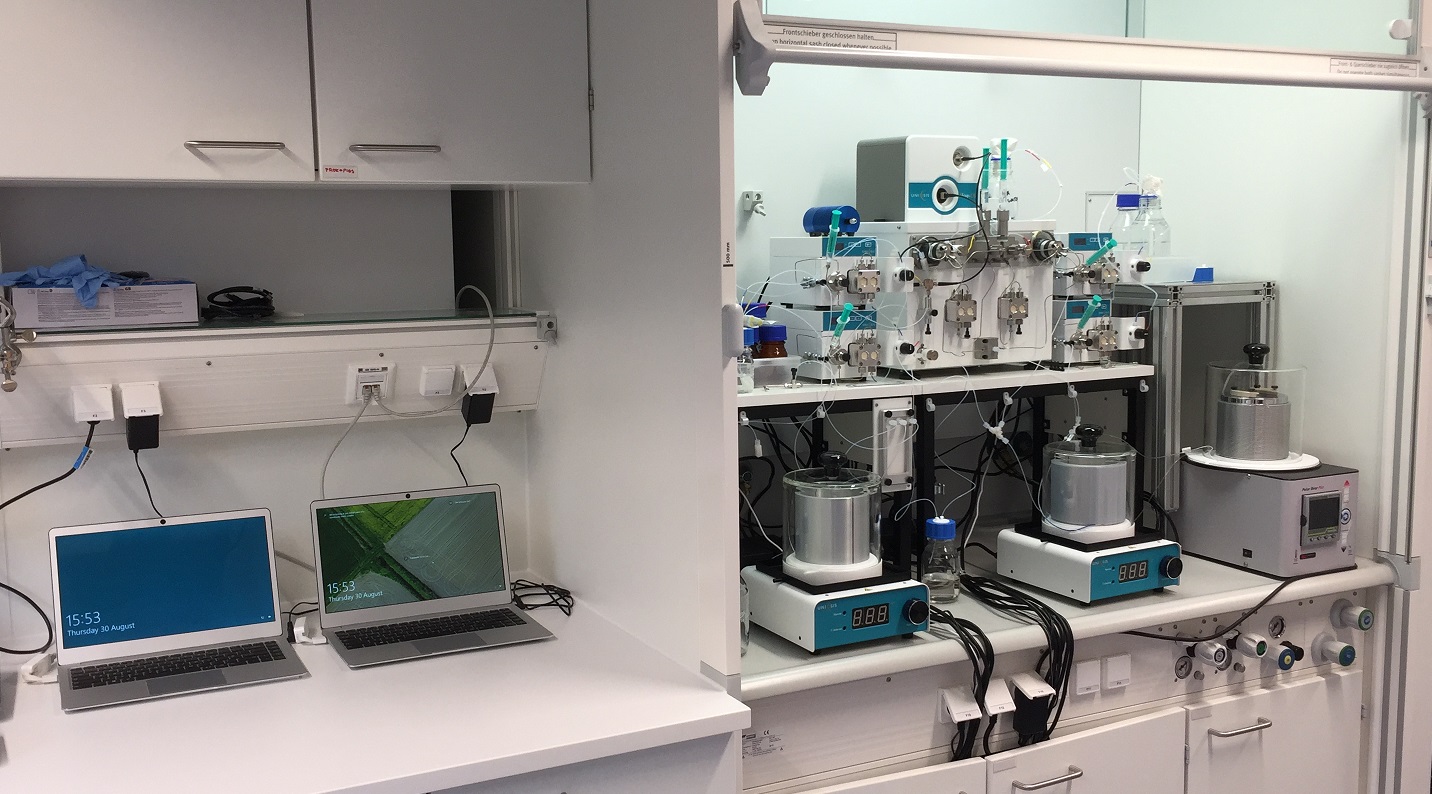Flow chemistry also called continuous flow chemistry or plug flow chemistry is used to describe a range of chemical reactions that occur in a continuously flowing stream as contrasted to classic static batch reactor systems. What the two have in common is the “reaction time”. The chemical industry has used flow chemistry systems for decades due to their speed, repeatability, inventory control and scalability. What is new is the ability to perform multiple and repeatable flow chemistry reactions on an automated platform, rapidly with very low volumes.

A continuous flow chemistry system provides for the introduction, mixing and reaction conditions (time, temperature, pressure and mole ratios) to perform a desired chemical transformation.
The time needed to perform a reaction in batch is simply measured with a timer. In a continuous flow system, this same reaction time is determined by the volume of the reactor divided by the flowrate (V/Vdot) which also results in units of time and the two methods are directly comparable. A simplified flow chemistry system would consist of at least two pumps, a mixing junction, a flow tube or reactor coil long enough to provide the time necessary for the reaction to proceed and a receiver for the reaction products. Because these flow reactions can operate at high pressures, the providers of these systems impose a pressure on the system (through a back pressure regulator) or resistance at the end of the flow path. This is needed to let these precision pumps operate liquid filled (hydraulic) so that they deliver precise volumes of reagents or solvents to the reactor. Priming of these pumps in conjunction with the back pressure regulator eliminates the presence of gas bubbles or air that will keep them from accurately dispensing liquids. Upstream of the mixing junction one can add a “mixing chip” which consists of hundreds of static mixers packed into a small volume that enables reactants to come into intimate contact prior to being raised to reaction temperature or prior to adding a third reagent. This mixing is especially significant when the two reactant streams differ markedly in their solubility parameters.
From this basic starting point comes a plethora of reaction conditions that can be manipulated by the researcher to accomplish project objectives. Reaction conditions that were either avoided or difficult to achieve can now be easily accomplished. Added to this is the ability to do multiple reactions with, in essence, a robot then dramatically expands the experimental space worth considering.
Examples of reaction strategies that are fully supported by flow chemistry systems are:
Common applications for continuous flow processes include producing pharmaceuticals, advanced polymers and other complex reactions too hazardous or toxic for large-scale batch production. These include:
In short, flow chemistry makes difficult reactions easier to run on a continuous basis and achieves results that can’t easily be reached by traditional batch chemistry. The overall result of continuous flow chemistry systems is a product with higher quality, fewer impurities, and faster reaction cycle time, which is preferable for any industry.
As flow chemistry process systems have gained traction, the number of reactions that can be performed with continuous flow chemistry has increased substantially. It has also gained popularity for its ability to take on common issues in the chemical industry.
Just a few examples of how flow chemistry may be applied are:
Our systems and solutions capture the benefits of flow chemistry processes, allowing customers to reduce their costs while improving quality and productivity. We accomplish these results by leveraging our 30 years of experience in the industry and our close relationships with leading experts in flow chemistry systems. We help our customers by presenting them with easy-to-understand flow chemistry process systems, engineering solutions and reactor designs. If you’re interested in flow chemistry systems and reactors, Sentinel can help.
Resources:
Flow Chemistry Equipment:
As a distributor and fabricator of high-purity equipment, Sentinel Process Systems helps solve a variety of process challenges facing the high-purity manufacturing industry. With a large portfolio of partners and a high level of industry expertise, we help our customers overcome process difficulties and optimize operations quickly and conveniently.